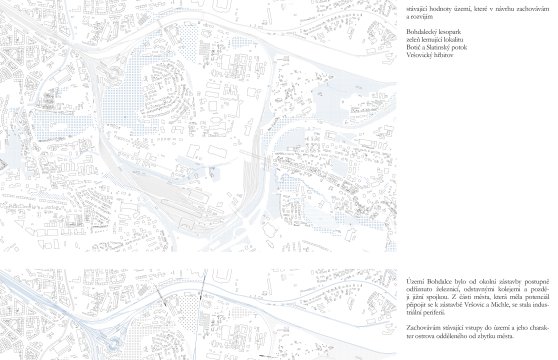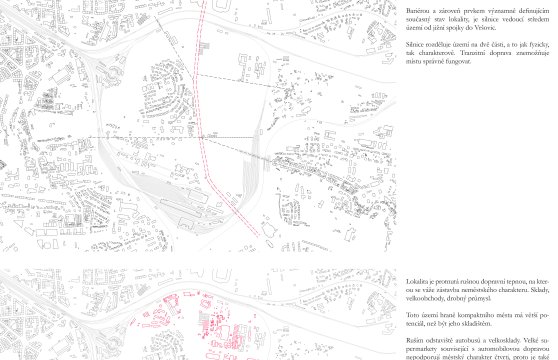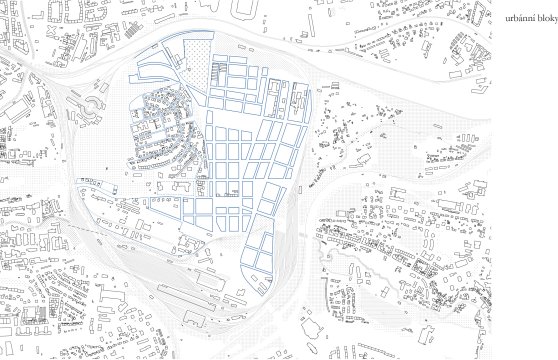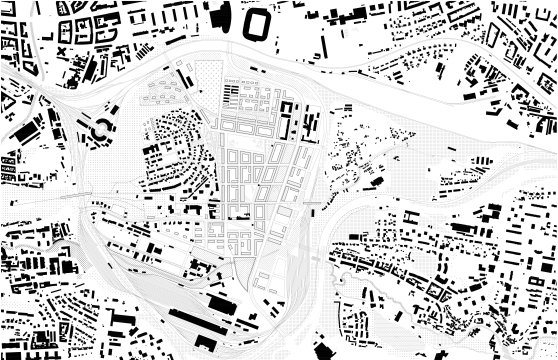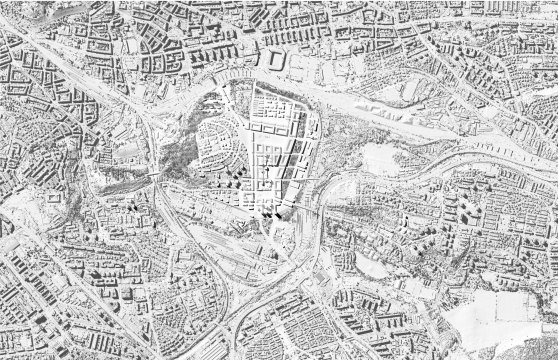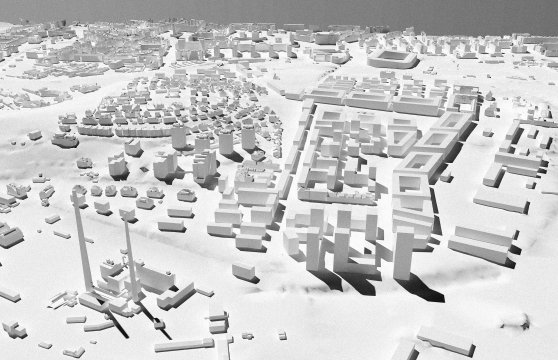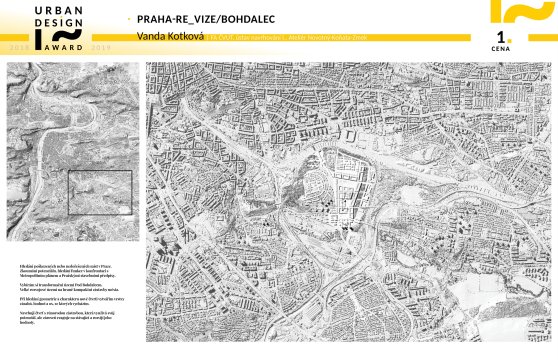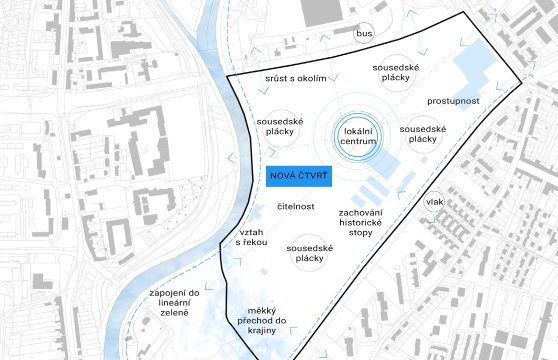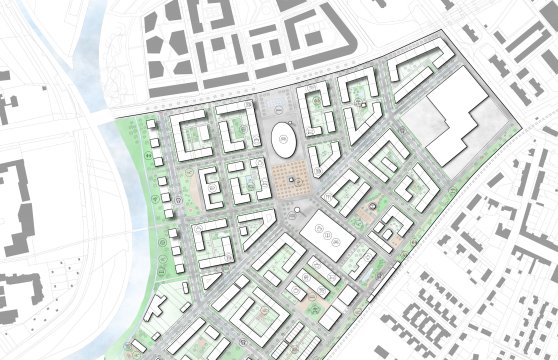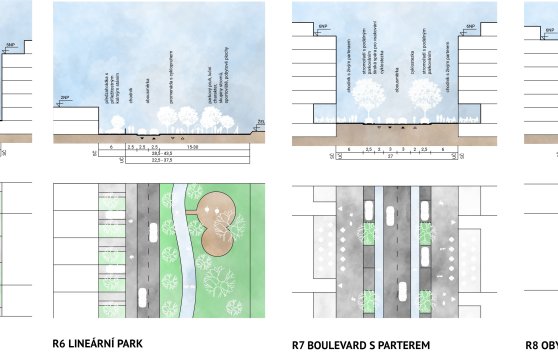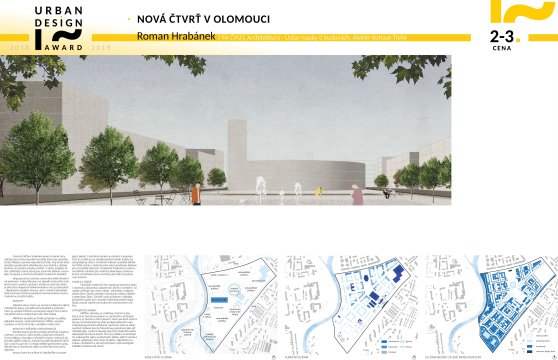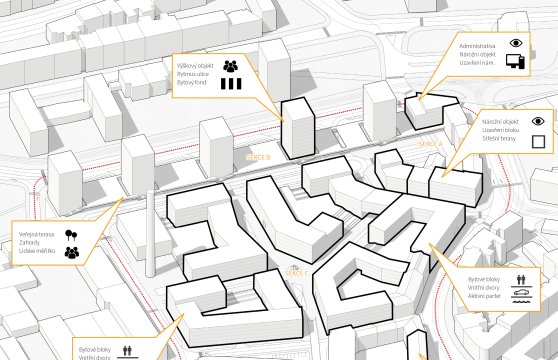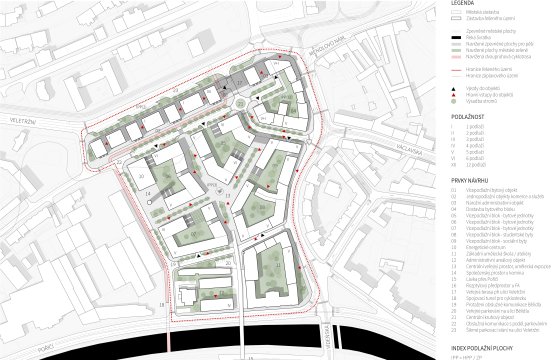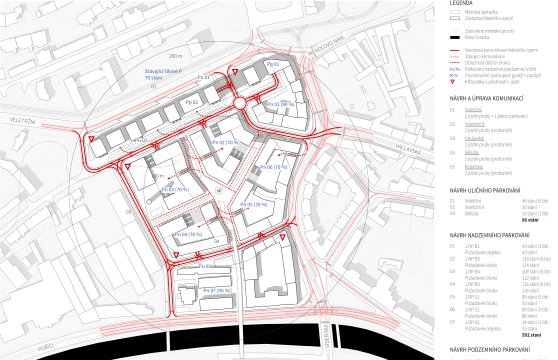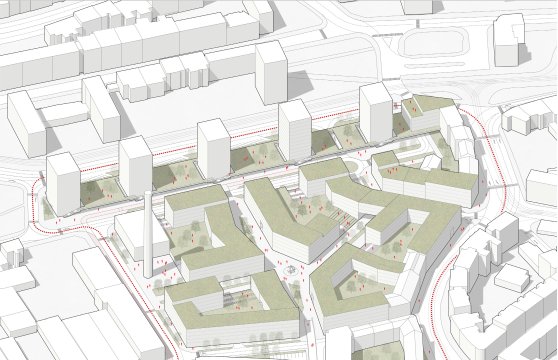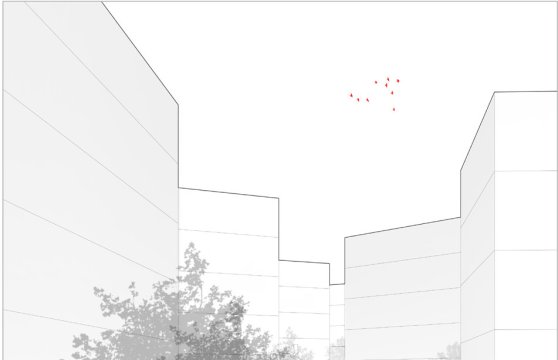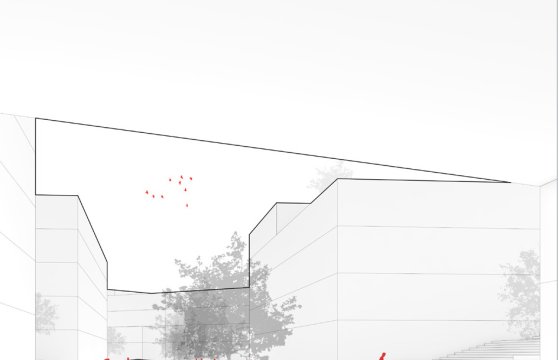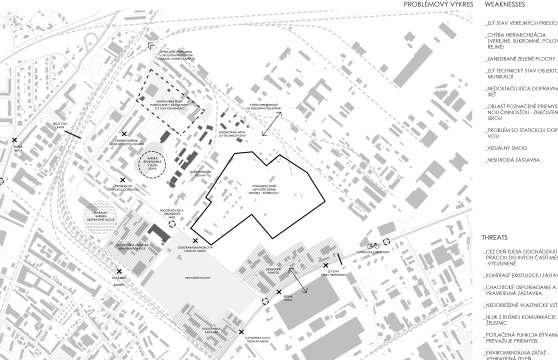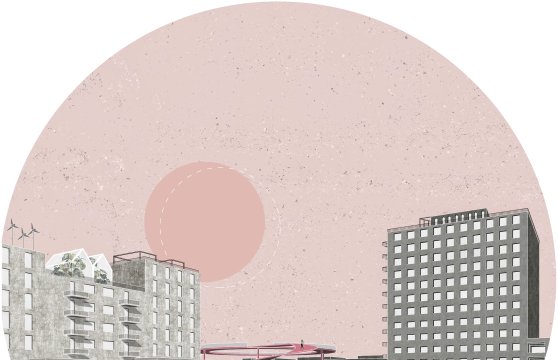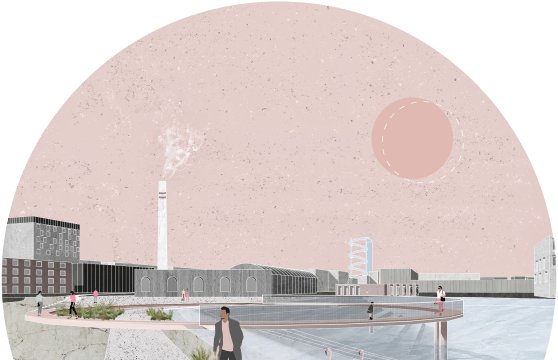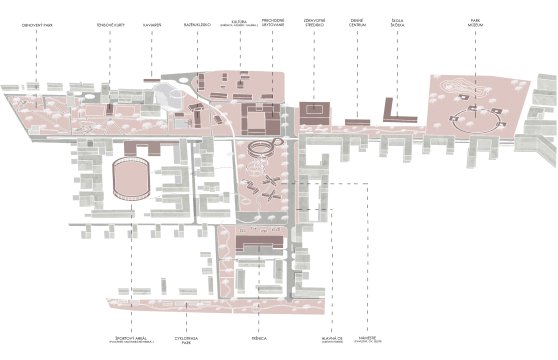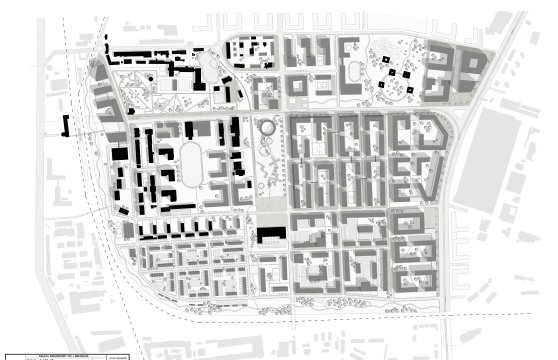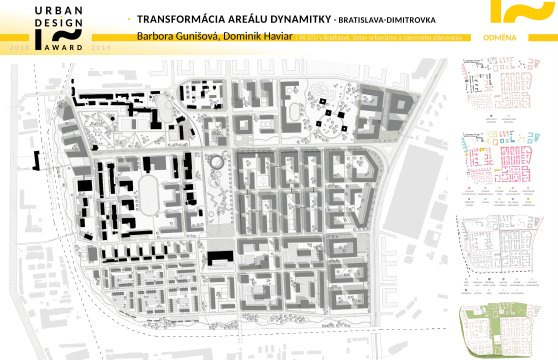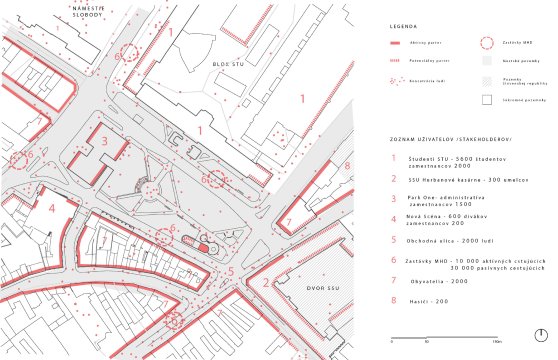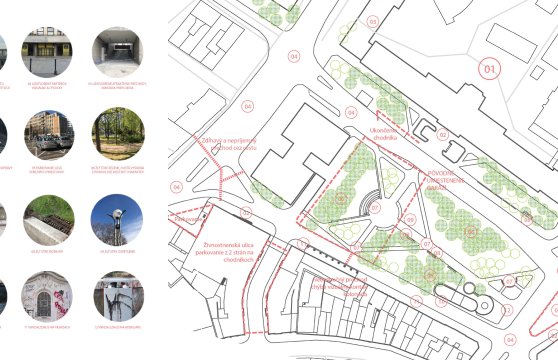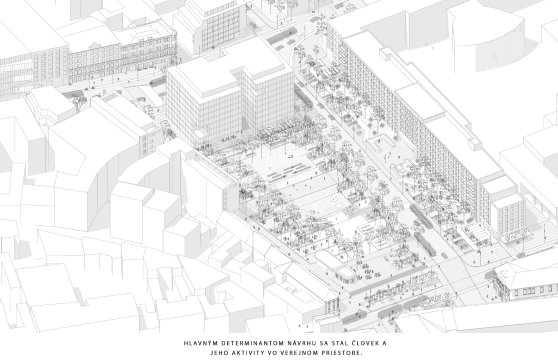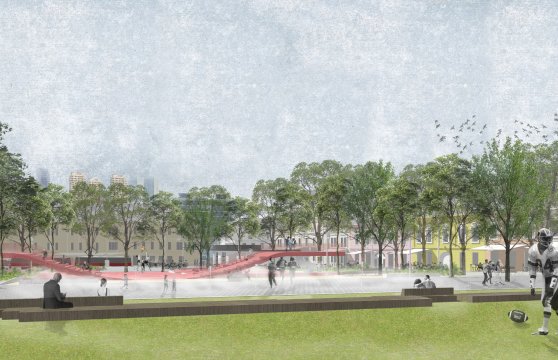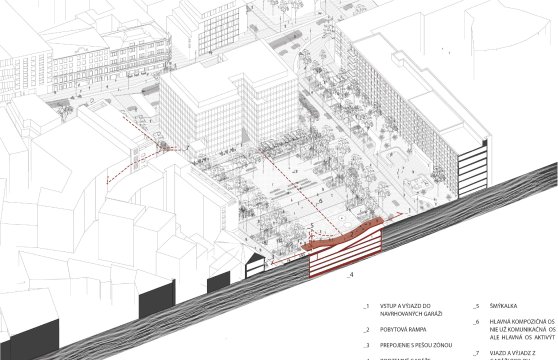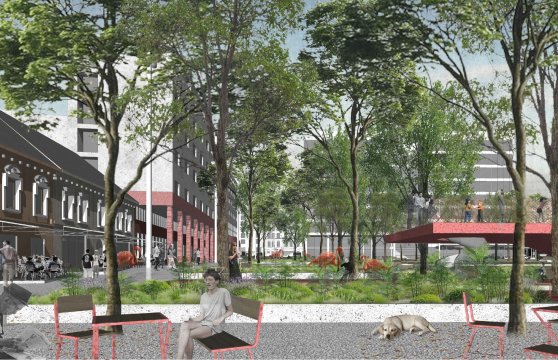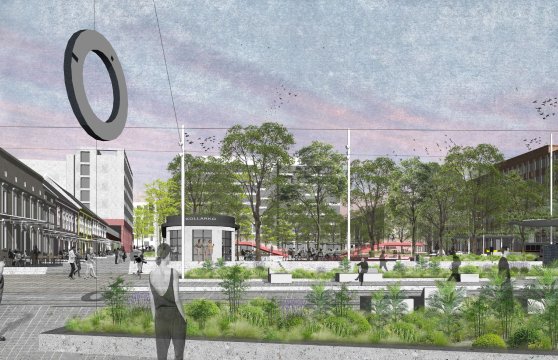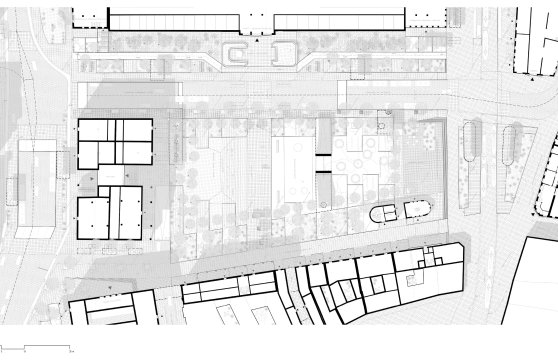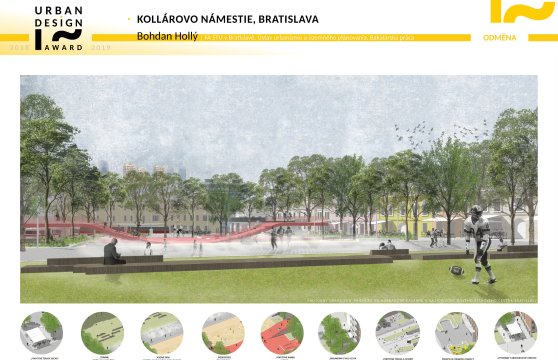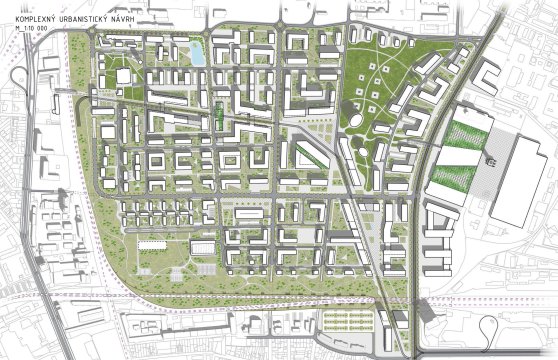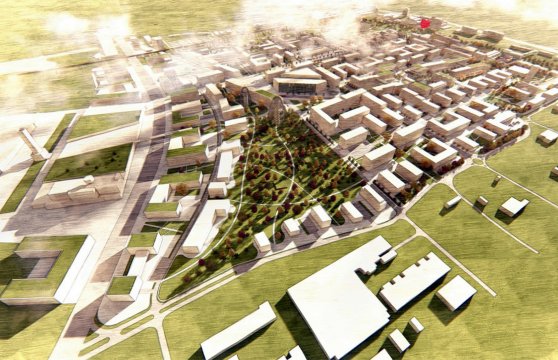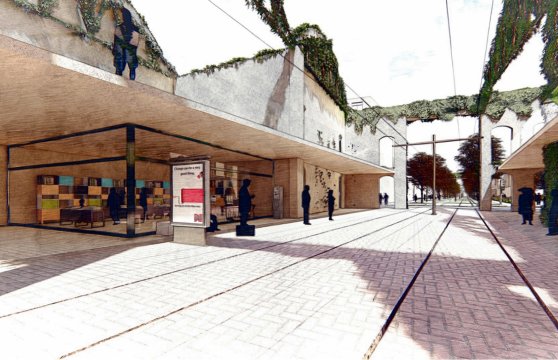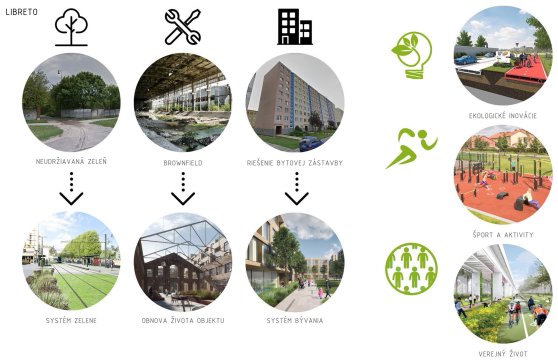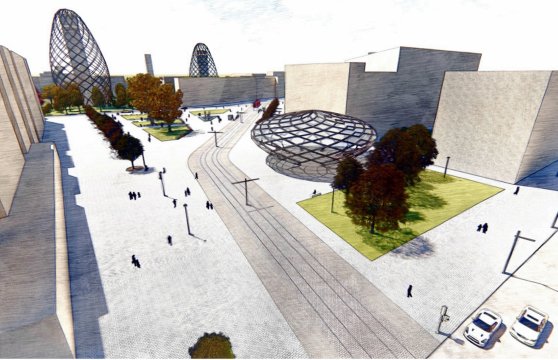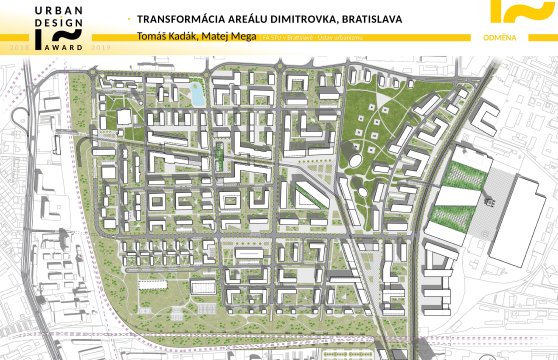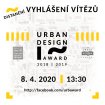The arrival of a new coronavirus in Europe made it impossible for the exhibition to be open publicly and for the award ceremony to be happening, so we will announce the winner on-line with a month delay. On Facebook and on the website of the Faculty of Architecture of CTU on Wednesday, April 8, 2020 at 1.30 pm.
Results of the international student competition URBAN DESIGN AWARD for the year 2018/2019
8/4/2020
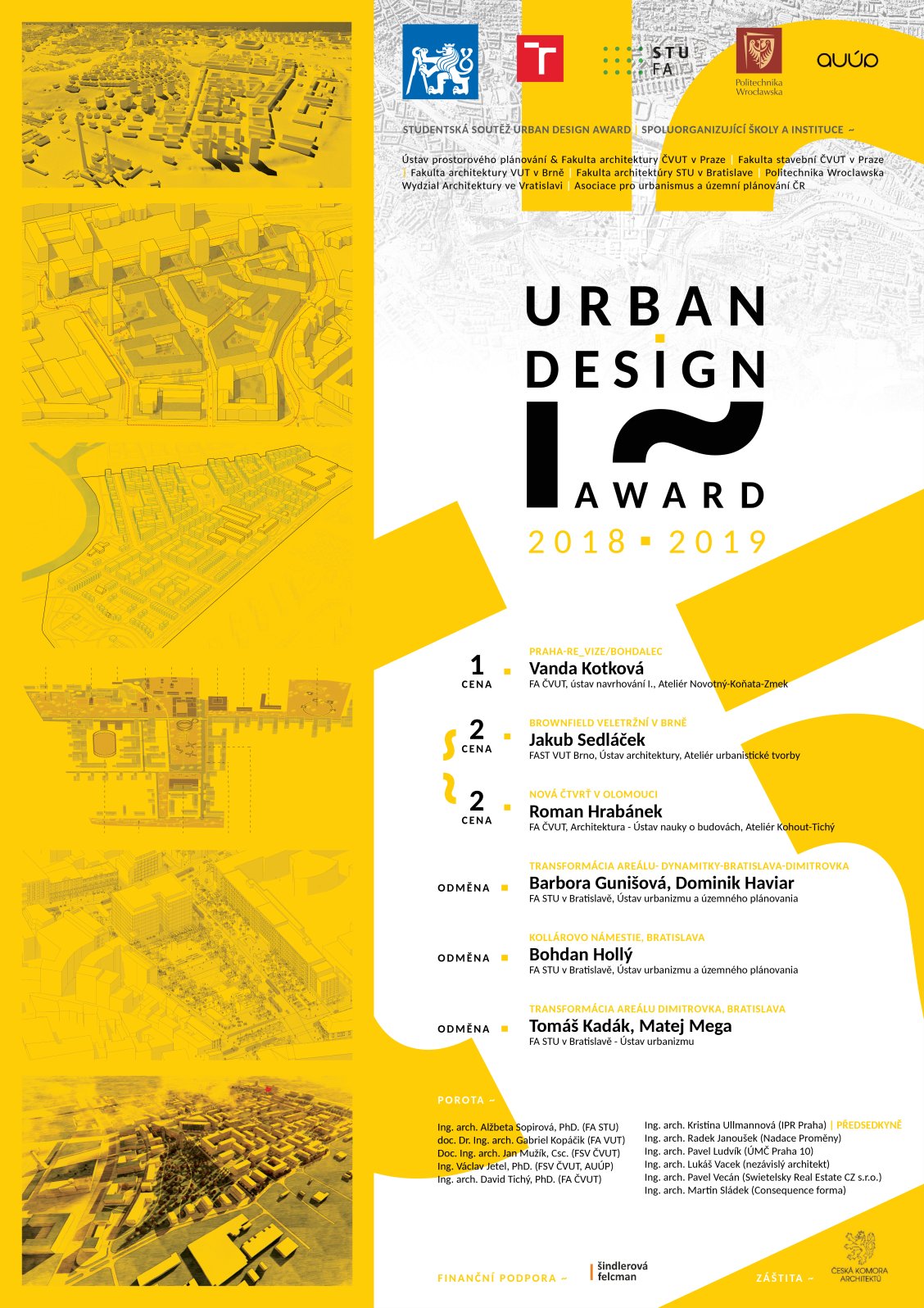
About the competition
The competition is open to all students who created a semestral project registered as an urban project in the given academic year. Master diploma projects cannot be entered into the competition. The organizers decided to name the competition 'international' due to the fact that the organizing schools are expanding and other foreign faculties are joining.
What makes the competition unique?
The competition links academia with professionals outside the academic world. Most judges are nominated from among them. Leading architects, project office managers, city office staff, staff of ministries or chief city architects participate. Students and their teachers are thus confronted with a practical perspective. At the same time it gives a valuable overview of the approach to teaching urban planning at various universities. "The quality of the competition projects is fairly balanced, over the years the graphic level has been changing depending on the technology development, and students are better able to present the process that led to the outcome. The work is increasingly focused on addressing public space or recovering neglected parts of cities," says about the competition its secretary Ing. Vít Řezáč. Many winners of the competition continue to work in the field of urban planning or spatial planning. "At our faculty alone, Veronika Šindlerová is teaching at the Department of Spatial Planning or Laura Jablonská at the Department of Landscape Architecture. Doc. Dalibor Hlaváček, head of the Department of Design Studio II, was also a winner," adds Vít Řezáč.
Jury
The jury was composed of the following jurors from the ranks of teachers of the participating universities: Ing. arch. Alžbeta Sopirová, PhD. (FA STU), doc. Dr. Ing. arch. Gabriel Kopáčik (FA VUT), doc. Ing. arch. Jan Mužík, Csc. (FSV ČVUT), Ing. Václav Jetel, PhD. (FSV ČVUT, AUÚP), Ing. arch. David Tichý, PhD. (FA ČVUT). The independent jurors were Ing. arch. Radek Janoušek (Nadace Proměny), Ing. arch. Pavel Ludvík (ÚMČ Praha 10), Ing. arch. Lukáš Vacek (independent architect), Ing. arch. Pavel Vecán (Swietelsky Real Estate CZ s.r.o.), Ing. arch. Martin Sládek (Consequence forma). Ing. arch. Kristina Ullmannová (IPR Praha) became the chairwoman. The process was supervised by the competition secretary Ing. arch. Vít Řezáč and coordinator Ing. arch. Zuzana Poláková.
Competition results
This year, a total of 32 entries entered the competition. 11 projects came from FA CTU in Prague, 14 projects from FA STU in Bratislava, 5 from FA VUT in Brno, 1 from FSv ČVUT in Prague and 1 from Liberec FUA TUL.
The jury's evaluation was accompanied by a rich jury discussion on the breadth, type and different scope of entries. These included public space projects, landscaping works, and the larger roles of new neighborhoods. Traditionally, one regulatory plan was also registered. The jury thus evaluated not only the outcome and its scope, but also the degree of inventiveness and the quality and presentation of the process that led to the design. Although a total of 9 proposals advanced to the second round, after a long debate, the judges agreed on six awarded winners. Eventually, the final ranking came out from the final voting.
1st place
The winner was Vanda Kotková from the Faculty of Architecture of the Czech Technical University in Prague, from Studio Novotný-Koňata-Zmek, Department of Design Studio I, with her project Praha-re_vize/Bohdalec in which she designs a neighborhood with a diverse development that exploits its potential but develops theme of one of the key localities for the development of the city, a large development area Bohdalce-Slatin. The jury appreciated its clear procedure and thorough analysis and quality of the design. She also positively evaluated the author's thinking in layers, suggesting focal points of the territory (centers of its development) and directions of permeability.
Full text of the jury evaluation:
The content of the submitted project brings a comprehensive evaluation of the relatively extensive and therefore certainly difficult topic, which is undoubtedly the issue of urbanization of a large development area. The author proceeds in an understandable way from the analytical part, where she emphasizes the positives and negatives of the given area, to the design part, in which she subsequently applies her previous experience to the completion of the existing urban structure with a relatively high quality new structure. However, the solution of the proposal is not one-sided, but it comprehensively coordinates both the elements of the urban landscape and the landscape elements in the city (streams and green belts), including the layout of public space and its key points, or the general location of civic amenities.
It is also important to underline that from the outset the author emphasizes the broader context and looks for logical links to the functioning of city-wide systems (eg green infrastructure or transport elements). The author logically attributes the area to a hierarchy (thinks in layers), suggests focal points of the territory (centers of its development) and directions of permeability. The chosen type of development - urban blocks, which in terms of density adequately approximates to the wider center, is derived from them. The chosen level in this locality corresponds with the given ideas of the height of the built-up area.
The overall work of the student could therefore be described as a very successful form of possible insight into the future development of the large development area of Bohdalec - Slatin and she is rightly entitled to the award received.
2nd – 3rd place
Two awards were awarded for the second and third place. To our student, Roman Hrabánek and to a student of the Faculty of Civil Engineering, Brno University of Technology Jakub Sedláček.
The work of Roman Hrabánek from the Czech Technical University in Prague, the Studio Kohout-Tichý, from the Department of Building Theory, dealing with the design of the New District in Olomouc, the project addressed the jury because it represents a well thought-out concept of the new District in a large army brownfield.
Full text of the jury evaluation:
The presented work represents an elaborate conception of the New District in Olomouc in the territory of a large army brownfield. The proposal is based on detailed analyzes and an understanding of the potential of the site. The analysis serves not only to the author to justify his proposal, but especially to its evaluation. This resulted in a very structured assignment, which is the main condition for the design of a comprehensive but understandable concept
The effort to detail perfectionist expression, interest in solving even a small real scale and parcelling, which the author applies even in the often neglected design of green areas and alleys, represents an unusual effort. Nevertheless, the author managed to enter the “dangerous” field of excessive specificity with adult ease. The urban structure, complemented by a parterre detail and typical profiles, is thus not a mere “structural exercise”, but brings an ordered richness of the environment and typology of development. The work does not neglect the basic systems and is devoted with great care to the structure, function and hierarchy of public spaces. The new district sensitively divides the proposal into social-functional units. The proposal is surprising in its balance and naturalness.
The project can be criticized for the concept of border areas, the connection to the wider surroundings, including the unused potential of the river. The stated objectives of broader relations do not seem convincing in the proposal. The urban expression of the “local center” and the Central Square is also questionable. The scale chosen and the urban conception of the Central Axis lack the sensitivity and "obvious" design. The weakness of the whole work is the graphical comprehensibility, the “reader” is forced to “read between the lines”, and to assume unspoken and un emphasized, albeit thought-out connections; precisely those that represent the exceptional value of the proposal.
2nd – 3rd place
In his project Brownfield Veletržní in Brno, Jakub Sedláček deals with the revitalization of the former clothing factories and the surrounding area in the wider center of Brno. His design elaborated in the Studio of Urban Design of the Institute of Architecture at the Faculty of Architecture of the Brno University of Technology attracted the jury with simple and comprehensible elaboration and persuasiveness of the designed urban structure. The jury appreciated the consideration of the principles of sustainability and concrete measures, which in the context of the present should be a natural part of every urban task.
Full text of the jury evaluation:
The evaluated work represents the revitalization of brownfield in the area of former clothing factories and the surrounding area in the wider center of Brno. The jury's design impressed with its simple and understandable overall processing. However, the documents provided lack a deeper analysis of the territory and the resulting conclusions in relation to the design part. The morphology of the proposed urban structure looks convincing. The size of the blocks creates a pleasant measure of development and pleasant public spaces. In the northern part, a line of tall, solitary objects is logically added. With regard to operational sustainability, a large number of spaces designed as public (courtyards, terrace above the parterre in the northern part) are questionable, although the created solution offers their hierarchy (semi / private / private).
The predominant solution of parking in buildings above ground level, which is in conflict with the effort for active parterre, seems to be problematic. Given the overall size of the area under consideration, the detailed scale of the proposal would deserve more detailed processing. A positive aspect of the proposal is the consideration of the principles of its sustainability, outlining concrete measures in individual areas, which in the context of the present should be a natural part of every urban task.
Reward
The jury decided to reward a pair of Barbora Gunišová and Dominik Haviar from the Institute of Urban Design and Planning FA STU in Bratislava for the project Transformation of the area - Dynamitky - Bratislava-Dimitrovka. The project excels in a clear and understandable analytical part and a nice zoom ratio in the design part. Last but not least, the jury was also addressed by a superbly urban design task, which transforms the Bratislava area of 105 ha into an autonomous city district.
Full text of the jury evaluation:
The jury was intrigued by the very urban design, elaborated within the studios at STU FA in Bratislava. The proposal presents the transformation of 105 ha of Bratislava territory into an autonomous city district. In comparison with other projects elaborated for this assignment, it stands out with a clear and understandable and analytical part and a nice zoom ratio in the design part. The actual flipping of the analytical part into the design suitably presents the problem drawing and flowcharts. Firstly, the proposed structure and the appropriate combination of proposed typologies, which is believable and avoids excessive schematicity, can be appreciated. The proposal also does not forget the existing values in the territory and shows schematically their possible revitalization. The project is presented in a well-arranged graphic form with sufficient text completion.
Nevertheless, the jury would welcome greater interconnection of these parts, which would help to make the design easier to read and to highlight the main urban qualities of the project. The final collages are also graphically successful, but they act more as separate graphic sheets than as targeted messages of specific urban design ideas.
Reward
The jury also rewarded Bohdan Hollý as well as the Institute of Urban Design and Planning FA STU in Bratislava for the Kollár Square in Bratislava. His bachelor thesis revitalizes an important public space in the center of Bratislava. The jury appreciated the quality analysis of public spaces in a wider territorial context as well as the subsequent proposal offering a diverse use of space taking into account the different needs of the users and institutions located there. The jury also appreciated the ecological use of rainwater and transport solutions in the form of associated stops allowing the use of autonomous passenger vehicles.
Full text of the jury evaluation:
The jury decided to award this bachelor thesis, which was relatively unique among the submitted projects, based on the solution of the revitalization of Kollár Square, providing a quality analysis of public spaces in a wider territorial context with subsequent synthesis in the form of Bratislava with regard to various human needs. The resulting diverse functions located within the square under consideration take into account not only the needs of square users, but also individual mostly public institutions, which interconnect and are connected by a pedestrian zone.
Another awarded part of the submitted project is work with blue infrastructure, which seeks to use rainwater ecologically in the fallout area through irrigation systems for public greenery and for the operation of water features. Last but not least, the project appreciates work with idle and public transport, with the idea of associated stops, which also allow the use of autonomous passenger vehicles.
Overall, very good project evaluation is also supported by the relatively good graphic level and presentation of the processed project, which does not depreciate the evaluation or staff of flamingos placed in the middle of this typical busy urban public space.
Reward
Tomáš Kadák and Matej Mega, also from the Institute of Urban Design and Planning FA STU in Bratislava, received a reward for the project of Transformation of Dimitrovka, Bratislava, a large industrial area. The jury appreciated the well-prepared analytical part, in which it examines the wider context, analyzes the greenery, the functionality of the operation, the transport, the composition and the history of the territory.
Full text of the jury evaluation:
The proposal addresses a large industrial area, which is no longer functional Dimitrovka site in Bratislava. The industrial site is currently abandoned, devastated and soil contaminated. The technical condition of many dilapidated buildings requires rehabilitation or reconstruction. Due to its convenient location. In the wider center of the city of Bratislava, the territory was evaluated as developmental, enabling transformation, while preserving the values of monument protection and priorities of sustainable development.
The authors proceeded to the proposal in a complex way, with an effort to integrate the whole solved areas into the whole-city context. The identity of the place is readable in the proposed urban concept, which incorporates some valuable and exceptional industrial buildings, torsion of technical and green infrastructure. The main idea of the design is based on a significant transversal compositional axis, between two urban radials, which connects important transport junctions - the railway stations of the city. The transverse line is reinforced by public spaces dominated by the original buildings, with new functional use as an industrial footprint of the area. Part of the area with environmental burdens is proposed to be used as an urban park.
The work was proposed by the jury for a reward for extensive processing of the analytical part - from the broader context, through the analysis of greenery, functional-operative, transport, composition and historical. The lack of work was the absence of a phase of searching for a concept of solution between the analytical and design part. Graphic processing is good.
Sponsors
Partner universities - the Faculty of Civil Engineering and the Faculty of Architecture of the Czech Technical University in Prague, the Faculty of Architecture of the Brno University of Technology, the Faculty of Architecture of the STU in Bratislava and the Faculty of Architecture of the Wroclaw Political University in Wroclaw regularly participate in sponsoring prizes and rewards. The next year will also support Politechnika Gdansk and the University of Opole. Financial resources were also provided by Šindlerová: Felcman.
Exhibition
The results of the competition are usually announced at the same time as the opening exhibition of the awarded projects. Due to restrictions related to the coronavirus pandemic this year the organizers were forced to postpone not only the announcement of the results but also the opening of the exhibition. In the meantime, the best projects can be viewed electronically.

